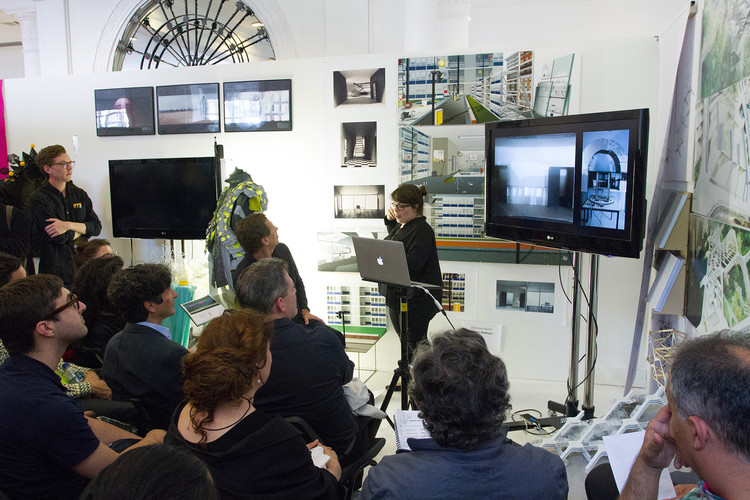
This article was written by Barbara Campbell-Lange, Head of Teaching at the AA School of Architecture in London, on her experience working at the school.
To be taught in a Georgian home, in rooms with fireplaces and moulded ceilings, in the centre of London, is exceptional. High ceilinged drawing rooms over-looking Bedford Square are connected to an idiosyncratic mews at the back via a network of un-designed bridge-pieces. This allows, through juxtapositions and awkwardnesses, glimpses and serendipitous meetings between students, staff and visitors that might otherwise not occur. It is the very nature and imperfection of this architecture that creates the School Community. Rubbing up against each other, against difference, against history, is essential to the formation of ideas: impossible people and situations are essential to creativity. Great thinkers and makers have walked these stairs, others will follow.

At the AA School of Architecture work is assessed collectively through dialogue: to argue and dispute comprises the essence of a democratic education. Debate between students, between student and tutor and between tutors, establishes a common ground of difference across the discipline. Disagreement is essential, it lies at the heart of ideas as the very material that must be worked with. Assessment is Pass or Fail: a fundamental principle dating back to the School’s founding in 1847, distinguishing it from all other schools of architecture. Work is either good enough or it’s not and this can be identified regardless of taste, style, subject, medium or mode. To recognise quality is what is taught, how to ask questions, how to make judgements. For the condition of learning is dynamic, occurring continuously between teachers and students, to large extent ineffable and unmeasurable in any conventional sense.
‘Honors’ at the AA is the democratic acknowledgement of merit. The work must challenge preconceptions. It must exceed its unit, its tutors, its origins, its language and reached the brink of collapse. These projects are not seamless or slick, they have rough edges that reveal potentials. The best projects are deeply personal and engage a moment of the unexpected, they cause tutors to recognise something never seen before. In these projects intuition meets intellect, the verbal meets the non-verbal, the concrete coexists with the abstract and the physical blurs with the metaphysical. This work gives more, dares more, risks more. It momentarily touches something sacred.

Honors is awarded on a particular afternoon in June, when a particular project, a particular delivery, a particular nuance captures something that is shared and agreed upon by the tutors. But as a community we know this is only of a moment, for all AA students are honors students. There are many fine projects, many fine minds in other stages of development that will become remarkable, special, important, unusual, discovered and recognised in time. It must be remembered that the condition of making things – ideas, objects, buildings, relationships – is forever unfolding. The greatest honor is to teach in this School: to engage the minds, the trust, the generosity and the tolerance of students and colleagues in the collaborative effort to reach for something never quite known. As T.S. Eliot said ‘there we have been: but I cannot say where.’
To read the full article, written by Barbara Campbell-Lange, Head of Teaching, please click here

